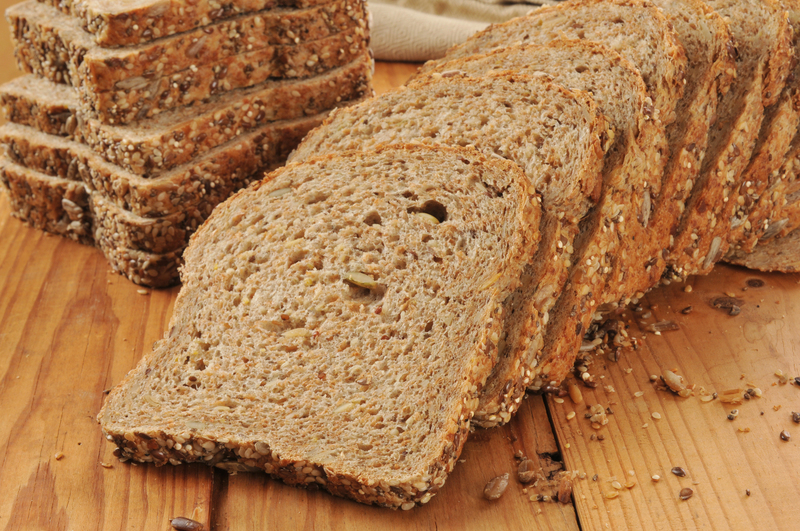Simple yet Effective Tips for Cleaning Burnt Residue Off Stovetops
Posted on 31/08/2025
Simple yet Effective Tips for Cleaning Burnt Residue Off Stovetops
Stovetops are the heart of most kitchens, and with frequent use, it's common for them to accumulate scorched grime and stubborn stains. If you're struggling to clean burnt-on residue from your stovetop, don't worry--you're not alone! In this comprehensive guide, you'll discover simple yet effective techniques for removing burnt residue from stovetops, making your cooking area safer, more hygienic, and visually appealing.
Why Is Burnt Residue on Stovetops Such a Challenge?
When food boils over or spills during cooking, it can quickly become burned onto your stovetop. The combination of high heat and food particles creates a tough, sticky, and unsightly layer that's often hard to tackle, especially if left untreated for too long. Over time, burnt-on residue can affect your appliance's performance, emit unpleasant odors, and become a bacteria hotspot.
Factors Contributing to Stovetop Burnt Residue
- Overcooking food without a lid or stirring
- Using the wrong cookware or cooking techniques
- Inefficient cleaning routines or delayed cleaning
- Spills not wiped up immediately
Understanding what causes burnt residues on stovetops helps prevent future messes and equips you for deep cleaning when they happen.

Preparation: What You'll Need for Cleaning Burnt Stovetop Residue
Before diving into the actual cleaning, gather the correct supplies for removing burnt stains from your stove. This will save you time and effort, ensuring a smooth cleaning process.
Essential Cleaning Materials
- Baking soda (sodium bicarbonate)
- Vinegar (preferably white distilled vinegar)
- Dish soap (degreasing power is preferred)
- Scrubbing pads or non-abrasive sponges
- Microfiber towels
- Razor blade scraper (for glass stovetops)
- Toothbrush (for crevices)
- Gloves (optional for sensitive skin)
Note: Always check your stovetop manual for manufacturer cleaning recommendations, especially for glass, induction, or ceramic models.
Top Tips for Cleaning Burnt Residue Off Stovetops
These simple yet effective stovetop cleaning tips will help restore your appliance's original shine, whether you have a gas, electric, glass, or ceramic stovetop.
1. Immediate Response: Act Quickly After Spills
- Wipe up spills immediately if safe: If you've just finished cooking and food boils over, wait until the surface has cooled enough to avoid burns (but is still warm). Use a damp microfiber cloth or paper towel to clean up the spill. The sooner, the better--fresh spills are always easier to handle than hardened ones.
- If the spill has burnt onto the surface, resist the urge to pick at it while hot to avoid scratching or damaging your stovetop.
2. Soften Burnt-On Residue Before Scrubbing
- Make a hot, soapy solution: Mix hot water with a squirt of dish soap. Dampen a towel with the solution and lay it over the burnt area for 15-30 minutes. This softens the residue for easier removal.
- You can also place a few spoonfuls of vinegar on tough spots, allowing its acidity to break down greasy, burnt-on residue.
3. Use Baking Soda for Burnt Stove Residue
- Sprinkle a generous amount of baking soda directly over the burnt patches.
- Lay a damp, warm towel over the baking soda and let it sit for at least 20 minutes.
- After the waiting period, use a non-abrasive sponge to gently scrub in circles. Baking soda acts as a mild abrasive, lifting burnt food without scratching.
For especially stubborn stove stains, make a paste with baking soda and a little water, apply it thickly, and leave it overnight before scrubbing.
4. Try the Vinegar Solution for Burnt Residue on Stovetops
- Vinegar is a wonder for stove cleaning! Fill a spray bottle with equal parts white vinegar and water. Spray over the burnt area, wait five to ten minutes, then wipe away with a soft cloth.
- For an even deeper clean, sprinkle a layer of baking soda first, then spray the vinegar solution on top. Let it fizz and bubble--this chemical reaction helps lift resistant stains.
5. Scrape Gently with the Right Tool
- For glass and ceramic stovetops: When burnt residue persists after soaking, use a razor blade scraper or plastic scraper designed for cooktops. Hold at a low angle, applying gentle pressure to avoid scratches. Always use a wet surface to make scraping safer.
- Never use steel wool or highly abrasive pads on glass or ceramic stoves--they can permanently damage the finish.
- For gas stovetops and burner grates: Remove and soak burners and grates in hot soapy water. Use a scrub brush to clean off burnt-on gunk.
6. Dish Soap and Degreaser Power
- Grease-fighting dish soaps work well for regular cleaning and can be used on stubborn, greasy burnt stains.
- For extra power, use a kitchen-safe degreaser (check labels), spraying it on stuck-on grease, letting it sit, then wiping with a microfiber cloth.
7. Use Lemon for Natural Cleaning Power
- Lemons are naturally acidic and cut through burnt-on residue and odors. Cut a lemon in half, sprinkle baking soda onto the affected stove area, and use the lemon half as a scrubber. Finish by wiping with a damp towel.
- This method not only removes burnt stains from stove surfaces, but also leaves a fresh citrus scent!
8. Toothbrush for Hard-to-Reach Areas
- No need to throw away your old toothbrush--put it to use by cleaning crevices and edges around burners where grime hides.
- Dip the brush in your baking soda paste or soapy water for best results.
9. Rinse and Wipe Thoroughly
- Always finish up by wiping the entire stovetop surface with a damp towel to remove residue from baking soda, soap, or chemical cleaners.
- Buff dry with a clean microfiber cloth for a streak-free shine that makes your stove look as good as new.
Special Considerations for Different Stovetop Types
Not all stovetops are created equal. Follow these tips to clean burnt residue off different stovetop materials and avoid accidental damage:
Gas Stovetops
- Take off burner grates and caps before cleaning.
- Soak removable parts in hot soapy water to loosen burnt residue, then scrub gently.
- Use a paste of baking soda for extra tricky areas, but avoid letting liquid seep into the burner openings.
- Never use harsh abrasives that could damage the enamel finish.
Glass and Ceramic Stovetops
- Let the surface cool completely before cleaning.
- Use a special glass cooktop cleaner or baking soda paste.
- Employ a razor blade as a last resort, always working gently and in a single direction.
- Don't use abrasive pads, as they may leave permanent scratches or dull the shine.
Electric Coil Stovetops
- Remove the coils (if possible) and clean up spills from the drip pans below.
- Soak drip pans and use a sponge with dish soap or baking soda paste to scrub off burnt residue.
- Never immerse electric coils in water, but wipe them clean with a damp cloth once disconnected and cool.
Proactive Measures: Preventing Burnt Residue Buildup
The most effective way to keep your stovetop clean is through prevention. Employ these habits to avoid burnt-on messes in the first place:
- Cover pots and pans to minimize splatter and boil-overs.
- Wipe up spills as soon as it's safe after cooking.
- Regularly use a microfiber cloth to clean your stovetop after each meal.
- Deep clean once a week to prevent residue from building up.
- Pay extra attention to high-traffic kitchen days, like weekends or holidays.
Choosing the Best Cleaning Products for Burnt Residue
Commercial cooktop cleaners are available for glass, ceramic, and traditional stoves. Look for ones that are labeled "non-abrasive" and "safe for stovetops." These products can be particularly helpful for removing stubborn burnt stains that do not respond to homemade remedies.
- When using commercial products, always follow the manufacturer's instructions and spot test first.
- Avoid chlorine bleach and harsh chemicals, which can etch or discolor stove surfaces.
Common Mistakes to Avoid When Cleaning Burnt Stovetops
Even though removing burnt residue is essential, avoid these pitfalls to extend your stovetop's life:
- Using abrasive cleaners or steel wool: These can scratch or dull the surface, especially on glass and ceramic cooktops.
- Letting liquid seep into electrical components: Always ensure all parts are thoroughly dry before reassembling.
- Applying too much force: Let cleaning agents and soaking time do their work instead of damaging your stove by aggressive scraping or scouring.
- Skipping regular maintenance, which leads to tougher burnt-on accumulations over time.

Frequently Asked Questions About Burnt Stovetop Cleaning
How often should I clean my stovetop to avoid burnt-on residue?
For best results, wipe and clean your stovetop after every use and deep clean at least once per week to avoid tough buildups.
Can vinegar and baking soda really remove burnt grime?
Absolutely! The combination of energy (fizzing action) and mild abrasiveness is remarkably effective at breaking down and removing burnt food and stains from most stovetop surfaces.
Is it safe to use a razor blade on glass cooktops?
When used carefully on a wet, cool surface and at a shallow angle, razor blades are one of the safest and most effective tools for scraping burnt residue from glass or ceramic stovetops. Just be gentle to avoid scratching.
What should I do if burnt residue isn't coming off?
If stubborn stains persist:
- Reapply soaking methods and allow more time for softening.
- Try a professional-grade stovetop cleaner designed for your appliance material.
- Consult your stovetop manufacturer for guidance on cleaning severely burnt surfaces.
Conclusion: Keep Your Stovetop Spotless and Shining
Burnt residue doesn't have to ruin the look or function of your cooking space. With these simple yet effective techniques for cleaning stove residue, you can restore your stovetop's shine and keep your kitchen inviting. Prioritize quick spill cleanup, gentle scrubbing with baking soda, and consistent maintenance to prevent and address tough burnt stains.
Remember, a spotless stovetop is not only attractive--it's also safer and more enjoyable to cook on. Start today, and enjoy the satisfaction of a truly clean kitchen!




